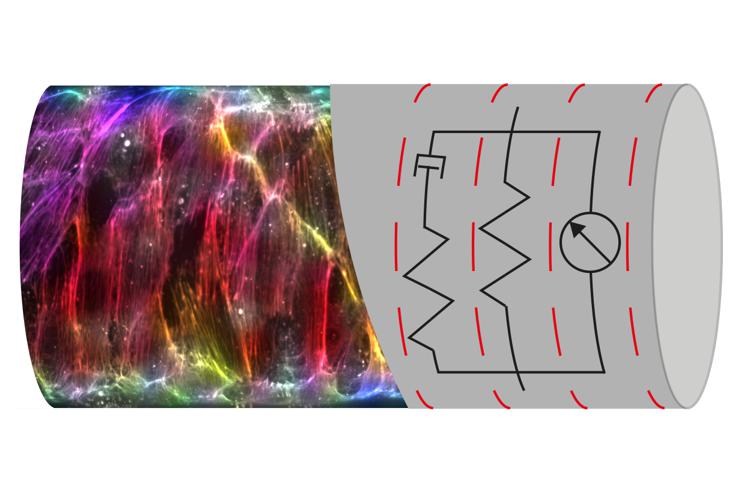- Imprimer
- Partager
- Partager sur Facebook
- Partager sur X
- Partager sur LinkedIn
Séminaire
Le 1 décembre 2025

Nicolas Cuny (Université de Genève, Switzerland)
Biological tissues are active materials exhibiting complex behaviour at the macroscopic scale, allowing them to fulfill diverse biological functions. However, the biochemical processes responsible for those original behaviours take place at much smaller scales, typically at the (sub)cellular level. This scale separation makes it challenging to adress tissues’ mechanobiology, i.e the reciprocal interactions between biology and mechanics. In this talk, I will introduce the active gels framework, developped in the last two decades and that allows to describe tissues at an intermediate mesoscopic scale as continuous materials and to integrate an effective description of the biochemical processes at this scale.
I will first illustrate the interest of such a mesoscopic description by introducing an active shell model that can be used to investigate the biomechanical determinants of the larval shape in different species of cnidarians, a family of sea animals. This model combined to quantitative imaging data reveals a few common mesoscopic features of larval tissue controling their shape and emphasizes the relevance of the mesoscopic scale to study shape evolution along species.
In a second time, I will exemplify how the effect of subcellular biological elements can be integrate in a continuous model. Based on in vitro mechanical assays, I will introduce a constitutive model of the endothelium tissue where it is described as an active anisotropic viscoelastic material which anisotropy is controled by the actin network organisation. This model recapitulates the dynamics of pressurized endothelial tubes and address the reciprocal couplings between biology and mechanics in those tissues.
Contact: Pierre Recho
Date
11:00
Localisation
LIPhy, salle de conférence
- Imprimer
- Partager
- Partager sur Facebook
- Partager sur X
- Partager sur LinkedIn